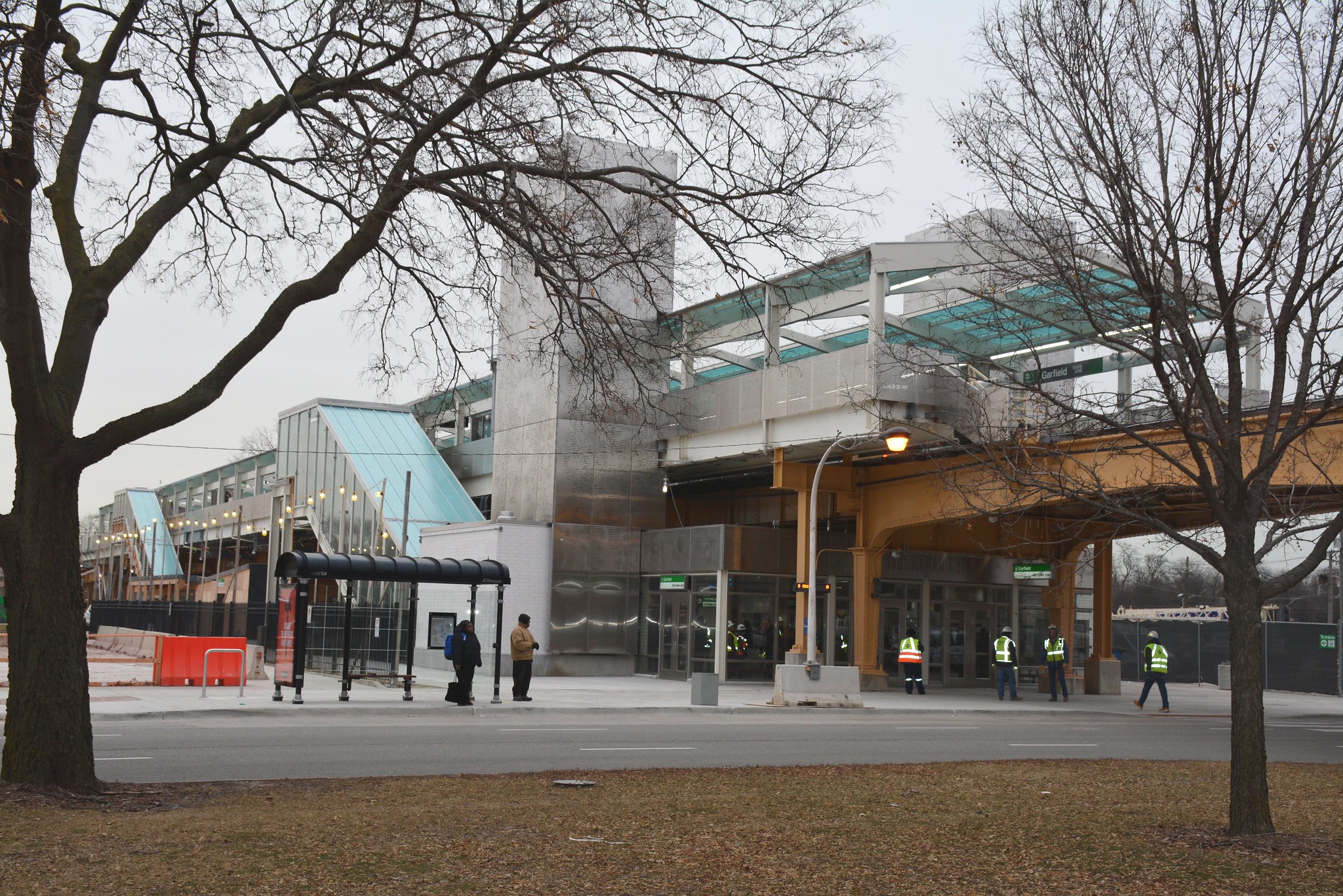At a virtual press conference put on Tuesday by the Jobs to Move America policy center, transit officials, mayors and community activists from Chicago and elsewhere in the country called on the Biden administration to end long-standing federal regulations dictating that any construction project that uses federal funds can’t favor local companies and residents when it comes to issuing bids and hiring.
These participants argued that it's only fair that if a public transportation infrastructure project is going to take place in a given community, locals should benefit economically from it. They noted that transportation projects are a great way to stimulate local economies coping impacted by the pandemic ,and said transit agencies should be able to hire area residents to work on those projects, and local businesses should get the first shot at the contracts.
The provision against favoring locals was added to the Federal Register in 1988. At the time, it was framed as a way to encourage competition, which would reduce prices and save municipal governments money. During the press conference, Madeline Janice, Jobs to Move America’s executive director, disputed the notion that the restrictions would negatively affect competition, saying “There was no empirical study to show that it was a problem.”

A 2015 position paper issued by the Institute for Public Procurement supported the rationale behind the prohibition. But it also acknowledged the benefits of spending cash in communities where projects are going in.
The Barack Obama administration took steps toward ending the restriction. In 2015, the U.S. Department of Transportation launched a pilot dropping the rule in several states, including California, Michigan and Texas. But that test was abandoned under the Donald Trump administration, which didn’t do anything with the data that was already collected.
Christy Veeder, the national program director at Jobs to Move America, said that her organization looked at the Obama administration's pilot data and found “there was no difference in the number of bidders and bid prices for the projects that had local hire provisions compared to the projects that didn't have local hire [provisions].”
CTA president Dorval Carter noted that he participated in the pilot while working for the Federal Transit Administration and later USDOT. He said that in his current job he got to see the importance of local hiring with the Garfield Gateway project, the renovation of the Garfield Green Line ‘L’ station, one of the 10 surviving stations from Chicago’s very first ‘L’ line. While the project did receive federal funds, Carter said the CTA was able to set local hiring targets.
“Nearly 30 percent of labor hours were performed by the residents of [communities where the average income was less than $40,000],” Carter said. “People [were] getting a change to work on a project that was literally in their backyard.” He said that included a resident of the Washington Park neighborhood, where the station is located, who was able to parlay that into a longer-term career.

Ben Walsh, mayor of Syracuse, New York, explained that issues of community impact were front and center with Interstate 81, which cuts through the city's historically Black neighborhoods. The highway is approaching the end of its useful life, and Walsh wants to tear it down.
Dekah Dancil, president of the Syracuse region’s Urban Jobs Task Force coalition, said that, due to the current prohibition, 87 percent of the construction workers who currently work on Syracuse infrastructure projects are white, while the city’s population is 51 percent POC. Furthermore, 90 percent of those construction workers don’t live in the city.
“With the removal of the federal ban on local hiring, we can create concrete paths out of poverty for struggling individuals, in ways we haven't seen before, on a large scale,” Dancil said. “The call for justice has been knocking on the door for quite a bit, and it's time for the [Biden] Administration to answer.”
Los Angeles Mayor Eric Garcetti, whose city participated in the DOT pilot, said that he saw the approach work well firsthand. When LA Metro, which operates the region’s transit, and plans and funds the region’s transportation projects in general, started building the K-Line (also known as the Grenshaw/LAX line), a light rail line that will serve southwest Los Angeles and the LAX Airport, the transit agency was able to hire from the very neighborhoods the line will serve.
Garcetti said the project has shown that hiring local not only helps residents get jobs and build experience that will help them later, but put more money in the local economy. That became all the more important during COVID-19 pandemic, which has disproportionately impacted Black and Latino communities. “Without local hire, let me put this bluntly, you hurt the economy. You widen racial disparities, you exacerbate racial inequality. You don't build back better, you build back worse.”
LA Metro CEO Phillip Washington recalled growing up in Altgeld Gardens, a public housing development on Chicago's Far South Side that has limited transit services, and seeing “infrastructure work being done in my community by a lot of folks who didn't look like me. When I tried to get a job, I was told that either I was not trained or it was too late."
Altgeld Gardens will be home to the southern terminus of the long-planned Red Line extension. When asked how removing the prohibition would impact that project, Carter said that he has already been talking with the Chicago Housing Authority about developing a hiring pipeline for public housing residents and housing choice voucher holders. And he hopes to work with labor unions, community organizations, and faith leaders to set up a pipeline where local residents can not only get jobs, but get certifications that would allow them to get better-paying jobs in the building trades in the future.
“[The Far South Side] is economically distressed to begin with,” Carter said. “And I certainly envision that this project will not only be an economic catalyst in terms of economic development that will occur around the [new] stations, but also [create] opportunities that will provide for long-term job opportunities.”





